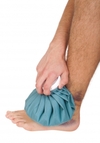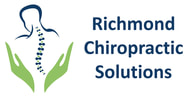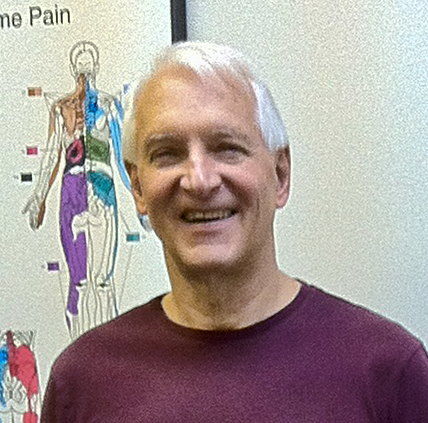
Sprain your ankle playing sports? Strain your wrist in a throw? It’s likely you will be told to RICE your injury by your coach, your well meaning neighbor, or your physician (and no, that’s not a reference to the grain grown in waterlogged fields in central and eastern asia).
RICE, which stands for Rest, Ice, Compression, and Elevation, is the go-to formula for treating acute inflammation following a muscle, ligament, or tendon strain. Its goal is to reduce pain and swelling during the initial stage of recovery and prevent further injury. The benefits of RICE are that it’s easy to self-administer at home, generally applicable to most injuries, and doesn’t require in-depth medical knowledge or expensive materials. You can use a variation of the formula when treating anything from a sprained ankle to a biceps strain or a stressed wrist.
However, while there is logical reasoning behind each stage of the RICE formula, clinical research supporting its benefits is not well established. Because of the number of variables involved in acute strains and sprains (severity, ligaments damaged, condition of the patient, etc) it has been difficult to for researchers to put together a conclusive study (This is not uncommon for many musculoskeletal situations - the people and the injuries are so complex as to make research difficult). However, one study of looking at ankle sprains in adults gives us a small view into how RICE application actually works. (link study)
The logic is thus:
Of all the steps in RICE, Rest requires the most modification. Research shows that while some rest is good for a sprained joint, exercise and manipulation help to improve muscle strains. Too much rest can become an issue if the joint is kept immobile and the muscle tone starts to degrade. The goal of resting an injured limb is to protect the stressed joint in order for rehabilitation. We want to avoid over-activity and reduce risk of further injury by a poorly performing limb, but we don’t want to increase the recovery time by losing strength and stability from prolonged immobilization. Instead of simple rest, we advocate for Protection with early activation. This can include rest, but also involves protected movement such as bracing, the use of a crutch, aircast, etc. so that graduated controlled motion is added to the recovery plan.
Ice, the next part of the RICE formula, is fairly uncontroversial. Research recommends an icepack (separated from the skin by a thin cloth or towel) or other cooling device placed on the injured joint for 12-20 minute sessions 1-3 times per day. One of the challenges of ice treatment is that it can chill the individual and cause them to tense their strained muscles. If localized ice application gives you the chills, try warming the rest of the body with a heat pack on the stomach to help you relax and enjoy the benefits of cold and heat together.
Compression and Elevation, the final two aspects of RICE, are much harder to research effectively. Their role in initial reduction of swelling by preventing further bleeding is reasonable, and there is no evidence to refute it. However, prolonged use of compression may be unnecessary and we recommend it only for the first day with most injuries. Only in serious muscle contusions and hematomas will the bleeding continue for more than a day and it is important to focus on other aspects of the recovery.
RICE, which stands for Rest, Ice, Compression, and Elevation, is the go-to formula for treating acute inflammation following a muscle, ligament, or tendon strain. Its goal is to reduce pain and swelling during the initial stage of recovery and prevent further injury. The benefits of RICE are that it’s easy to self-administer at home, generally applicable to most injuries, and doesn’t require in-depth medical knowledge or expensive materials. You can use a variation of the formula when treating anything from a sprained ankle to a biceps strain or a stressed wrist.
However, while there is logical reasoning behind each stage of the RICE formula, clinical research supporting its benefits is not well established. Because of the number of variables involved in acute strains and sprains (severity, ligaments damaged, condition of the patient, etc) it has been difficult to for researchers to put together a conclusive study (This is not uncommon for many musculoskeletal situations - the people and the injuries are so complex as to make research difficult). However, one study of looking at ankle sprains in adults gives us a small view into how RICE application actually works. (link study)
The logic is thus:
- Rest both reduces the demands of the afflicted tissue (reducing blood flow and swelling) and helps to avoid stress on already injured tissues
- Ice reduces swelling by lowering the energy demand of the localized area and contracting blood vessels to decrease blood flow. It also reduces pain by numbing the nerves in the stressed area.
- Compression stops the internal bleeding from damaged capillaries and helps reduce swelling.
- Elevation lowers the blood pressure in the area to limit bleeding and increase drainage.
Of all the steps in RICE, Rest requires the most modification. Research shows that while some rest is good for a sprained joint, exercise and manipulation help to improve muscle strains. Too much rest can become an issue if the joint is kept immobile and the muscle tone starts to degrade. The goal of resting an injured limb is to protect the stressed joint in order for rehabilitation. We want to avoid over-activity and reduce risk of further injury by a poorly performing limb, but we don’t want to increase the recovery time by losing strength and stability from prolonged immobilization. Instead of simple rest, we advocate for Protection with early activation. This can include rest, but also involves protected movement such as bracing, the use of a crutch, aircast, etc. so that graduated controlled motion is added to the recovery plan.
Ice, the next part of the RICE formula, is fairly uncontroversial. Research recommends an icepack (separated from the skin by a thin cloth or towel) or other cooling device placed on the injured joint for 12-20 minute sessions 1-3 times per day. One of the challenges of ice treatment is that it can chill the individual and cause them to tense their strained muscles. If localized ice application gives you the chills, try warming the rest of the body with a heat pack on the stomach to help you relax and enjoy the benefits of cold and heat together.
Compression and Elevation, the final two aspects of RICE, are much harder to research effectively. Their role in initial reduction of swelling by preventing further bleeding is reasonable, and there is no evidence to refute it. However, prolonged use of compression may be unnecessary and we recommend it only for the first day with most injuries. Only in serious muscle contusions and hematomas will the bleeding continue for more than a day and it is important to focus on other aspects of the recovery.



 RSS Feed
RSS Feed